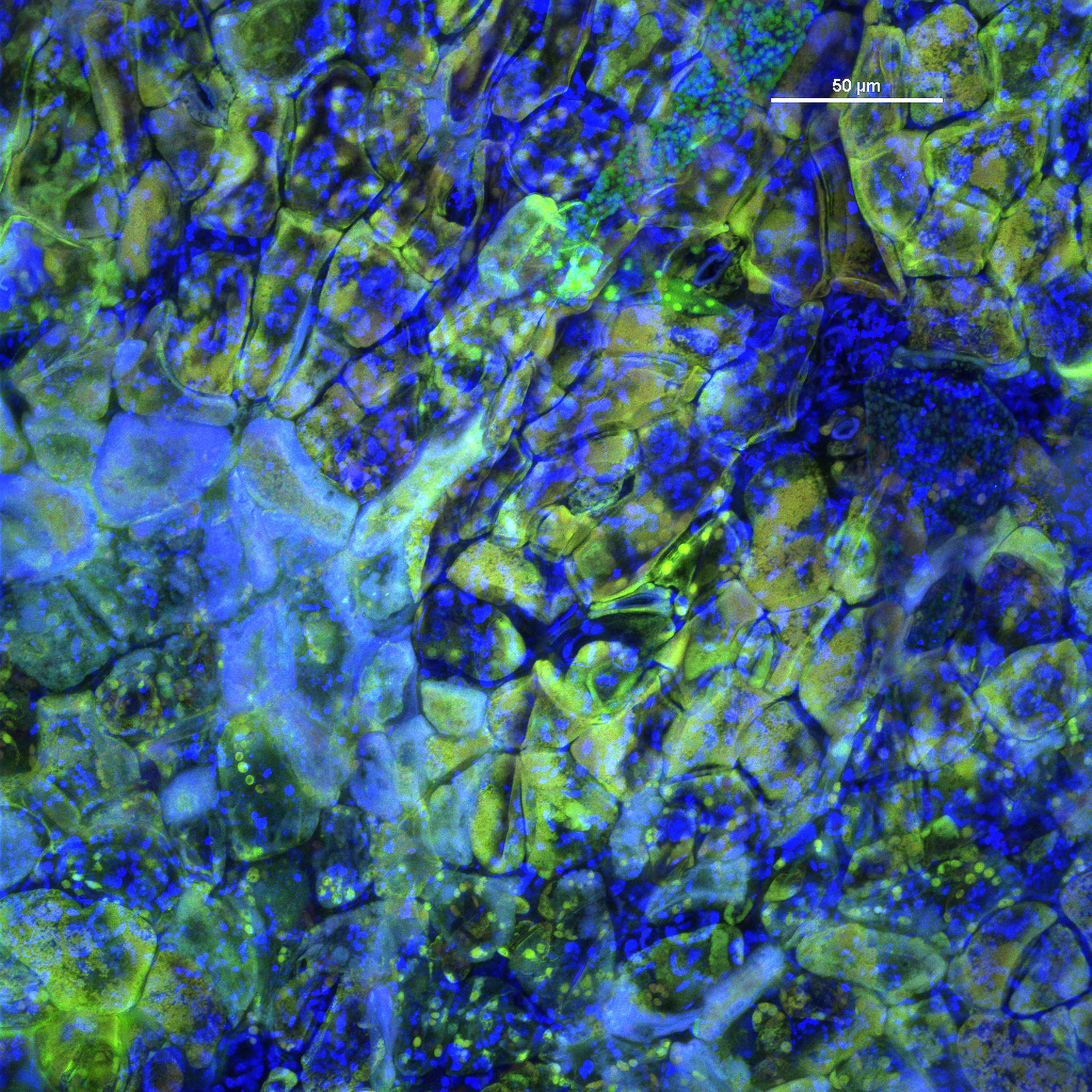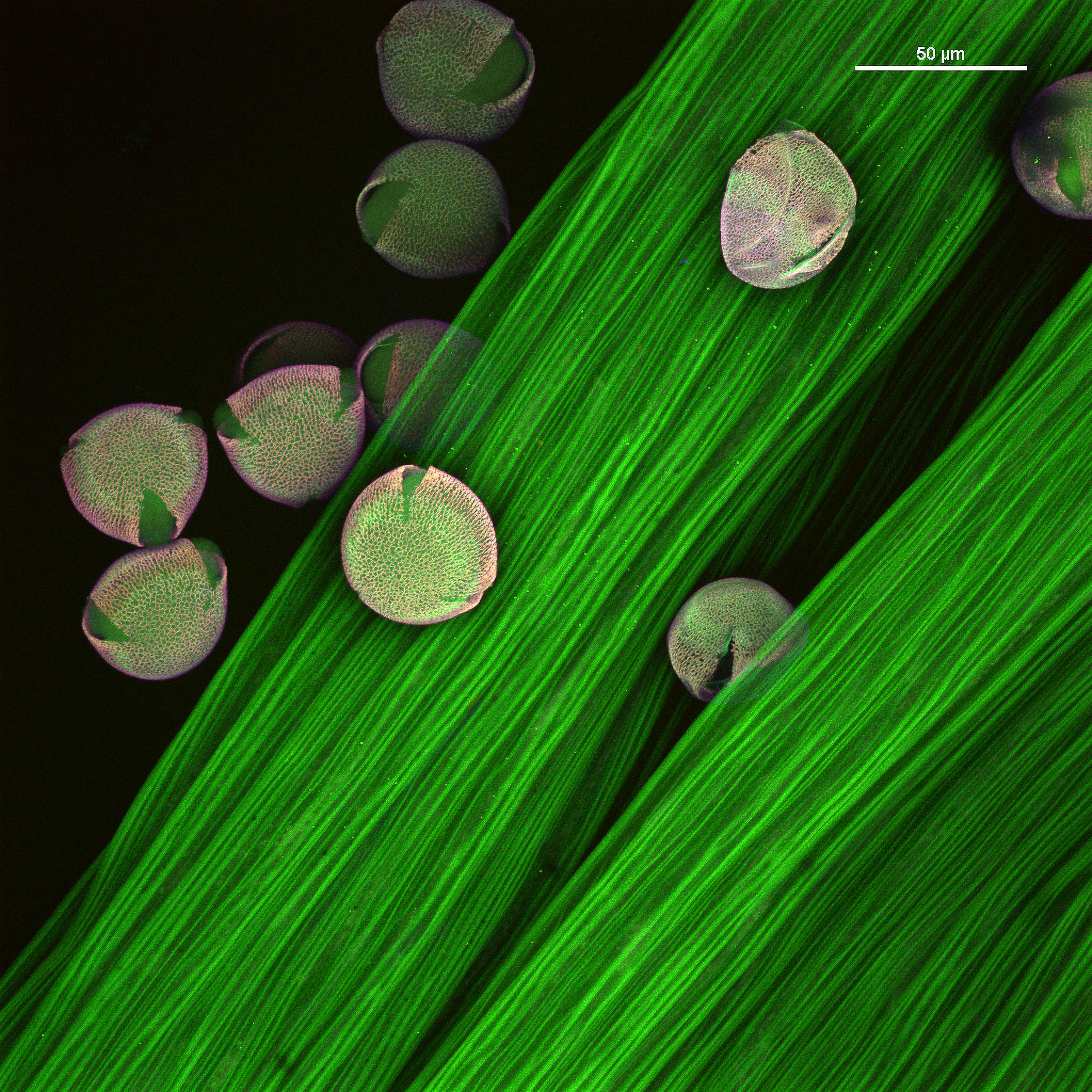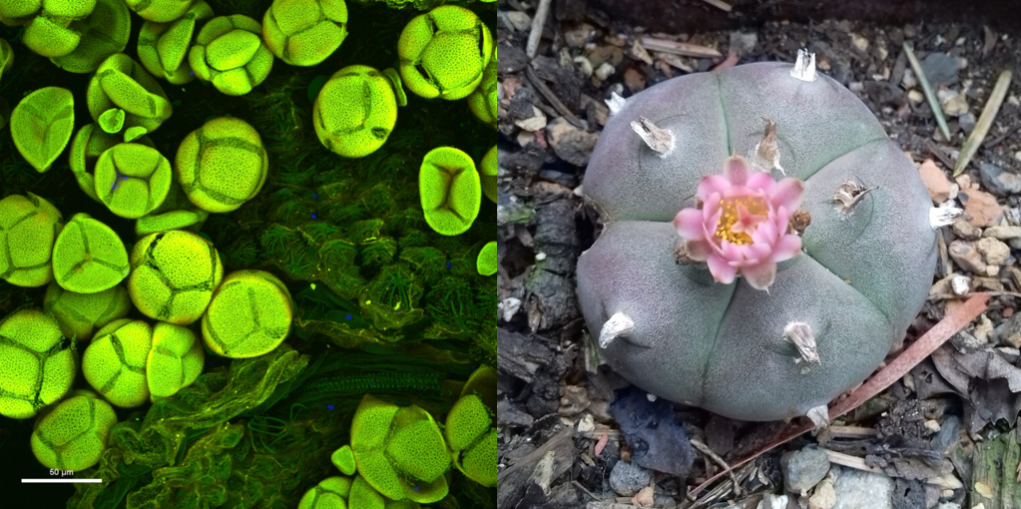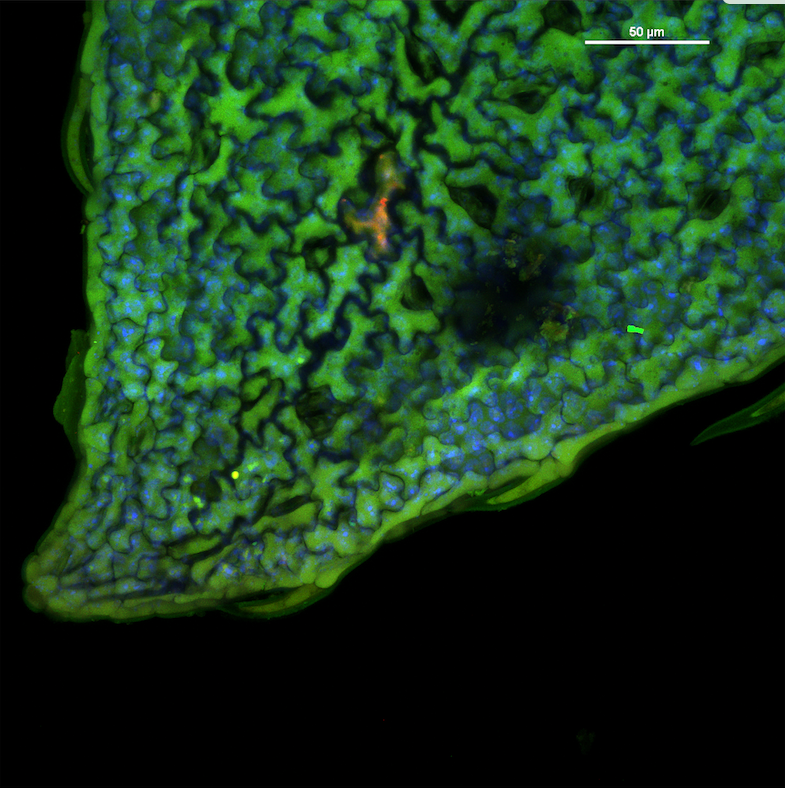
(Salvia Divinorum 2 Enhanced, Microcosms, color microscopic photograph 2023)
Unfolding Knowledge, One Leaf at a Time:
Science meets Art and Activism in Pflugheber and White’s Microcosms Project
Interview by Olivia Ann Carye Hallstein
Jill Pflugheber and Steven White have created layers of fascination, activism, and learning through their visually stunning Microcosms: A Homage to Sacred Plants of the Americas (https://www.microcosmssacredplants.org/). A sparkling example of the intersection between arts and sciences, Steven and Jill use microscopy to reveal the innerworkings of sacred plants to the Americas. By promoting indigenous knowledge bases within both artistic and scientific academic disciplines, they are supporting a vital and much overdue spotlight on some of the most important information about the very ground we live on and the people who spent thousands of years learning from and about it. Their work was featured at the Chamanismo (Shamanism) exhibition held at the Museo Chileno de Arte Precolombino in Santiago, Chile in 2022.

(Datura Innoxia, Microcosms, color microscopic photograph 2023)
Jill and Steven, these images are enrapturing. Microcosms is not only beautiful, but also scientific. Can you specify what the color microscopy is depicting here (cholorphyll, proteins, stomata, etc.)? What have you learned about both the plants and their visual properties in this process?
These confocal images were acquired by scanning the plant (leaves or flowers mostly) with three lasers. The plants were not labeled with any dyes or stains, so the only fluorescence (blue, green or red) we see is from components of the plant that will fluoresce under these light conditions. This means it is not possible to delineate exactly what structure is what color. Additionally, there may be a variety of molecules excited by the same laser line—so multiple structures may emit the same color. A single structure or molecule may excite/emit more than one color at a time, giving a range from purple to yellows. Chlorophyll is most often green but can be blue as well. Stomata often have blue guard cells, and these cells may have different colored proteins within them. Xylem is often green. Terpenes may be any color, depending on the terpene, and so on. Open stomata, closed stomata; terpenes traveling down trichomes; pollen at various stages of maturation. We are visualizing not just structure, but function as well.

(Brugmansia spp., Microcosms, color microscopic photograph 2023)
That is amazing! The structures that are revealed are enthralling and beautiful. It is incredible to see the actual functioning of the plant in visual form. And your interest in the function of the plants goes beyond aesthetics. How have you approached choosing your specimen?
We conceived our work in Microcosms as a double homage to the sacred plants of the American continent (with its immense geographical diversity that includes both deserts and rainforests) and also to the indigenous knowledge holders who have safeguarded the stories that the plants tell. The idea of “sacredness” can be difficult to define. Shouldn’t all plants and all life in its tremendous, though ever-diminishing, diversity be considered sacred? Of course. But certain species, for different reasons, are more culturally significant than others, as many readers of Robin Wall Kimmerer’s book Braiding Sweetgrass have discovered. Microcosms selectively highlights a significant, though still relatively small, number of plants forming a spiritual pact that ensures the wellbeing and survival of all species. Using a term that is part of his Rarámuri (Tarahumara) heritage, Enrique Salmón explains the importance of iwígara in the introduction to Iwígara, the Kinship of Plants and People: American Indian Ethnobotanical Traditions and Science: “In a worldview based on iwígara, humans are no more important to the natural world than any other form of life. This notion influences how I lead my own life and guides many of my decisions. Knowing that I am related to everything around me and share breath with all living things helps me to focus on my responsibility to honor all forms of life.” We learned a great deal by researching the plants for Microcosms and also by taking care of them, in their complete cycles from germination to flowering.

(Datura Innoxia, Microcosms, color microscopic photograph 2023)
When you describe caring for these plants during their complete cycles, it reminds me of rituals and goals of some interspecies collaboration projects. Currently, more and more research is coming to light about the intersection of hallucinogens and psychological healing as well. How do these properties intersect for you within this realm of science, native histories and contemporary healing?
It’s certainly true that often the revered plants that appear in Microcosms are psychoactive. The two authors of Plants of the Gods: Their Sacred, Healing and Hallucinogenic Powers (1998) discuss why these special vegetal entities are so important. According to the great Harvard ethnobotanist Richard Evans Schultes and Albert Hofmann (the Swiss scientist who was the first to synthesize LSD): “Plants that alter the normal functions of the mind and body have always been considered by peoples of nonindustrial societies as sacred, and the hallucinogens have been plants of the gods par excellence […] It is in the New World that the number and cultural significance of hallucinogenic plants are overwhelming, dominating every phase of life among the aboriginal peoples.” The slightly bigger picture with regard to Microcosms and plants such as tobacco, amaranth, cacao, corn, sweetgrass and others is without a doubt more nuanced and well worth one’s attention. Current scientific research on the so-called natural psychedelics (such as magic mushrooms, the plants that together make ayahuasca, and certain cacti) is demonstrating in definitive ways potential health benefits. Absurdly repressive anti-drug laws around the world will need to change in order to accommodate these new realities. This is happening already. Canada and certain places in the United States such as Oregon, Colorado, and even Washington, D.C. are leading the way toward a more just treatment of plants and substances that will become the future treatments of many debilitating diseases. Perhaps Microcosms can contribute in a small way with other myriad efforts toward the creation of this change of consciousness.

(Lophophora Williamsii Peyote, Microcosms, color microscopic photograph 2023 and digital photograph)
This relates well to where your work is being presented at the Chamanismo (Shamanism) exhibition held at the Museo Chileno de Arte Precolombino in Santiago, Chile. Do you see this as an opportunity to contribute to this change of consciousness?
Yes, we were so pleased and honored to learn that Constantino Manuel Torres, the curator of the exhibition “Shamanism: Visions Outside of Time,” (open through June 2023) chose some of our confocal images of Anadenanthera colubrina and Trichocereus pachanoi for the show’s catalog and publicity. It was amazing to see a microscopic San Pedro cactus on a gigantic banner hanging from the roof of the museum illuminating a busy city street. As Torres points out in the published catalog text: “From shamanism we can learn how to develop an intimate knowledge of our immediate environment, to view the city and its surroundings as an entity full of patterns that can be traversed and understood. Such knowledge of the urban environment brings with it and demonstrates the interconnectedness of all component elements. Indigenous cultures all over the world over centuries have intelligently developed concepts of what is proper for them and their setting at a moment in time.” These are powerful ideas that can orient our contemporary actions (wherever we live) in conjunction with a respectful understanding of the sacred plants that we have included in Microcosms.

(Hierochloe Odorata, Microcosms, color microscopic photograph 2023)
The theme of interconnectedness is increasingly important as a symbol and as an actualization. Can these images act as metaphors that bridge misinformation in cultural understanding?
Microcosms is an ecodigital repository of biocultural heritage. As we mention in the introduction to the website, each stoma, each trichome, each patterned fragment of xylem and vascular tissue, as well as each grain of pollen in these vital portraits is not only a way into previously unseen vegetal realms, but also a potential way out of a collective ecological crisis. EcoArtSpace sponsored a really inspiring Tree Talk last October called “Fire Transforms” by curator, teacher and art activist Rina C. Faletti. She’s written a brief commentary on Microcosms, and in it she says: “Going far beyond what might appear to be another illustrative account of the beauty of plant patterns, shapes, and colors at an unseen scale, White and Pflugheber successfully argue not only for the organism as art, but also art as organism. Here the project extends its reach from the patently visual to deeper realities of consciousness, agency, equality of lifeforms.” We fervently hope that Microcosms, while paying tribute to the indigenous stewards who have preserved ancestral plant knowledge over the millennia, serves as a call to urgent, empathic, morally based activism as conservators, creators and informed citizens against the political and economic systems that are so irrevocably harmful to the environment.

(Anadenanthera colubrina, Microcosms, color microscopic photograph 2023)
Thank you for this truly incredible work, Jill & Steven! It has been fantastic to learn from you.